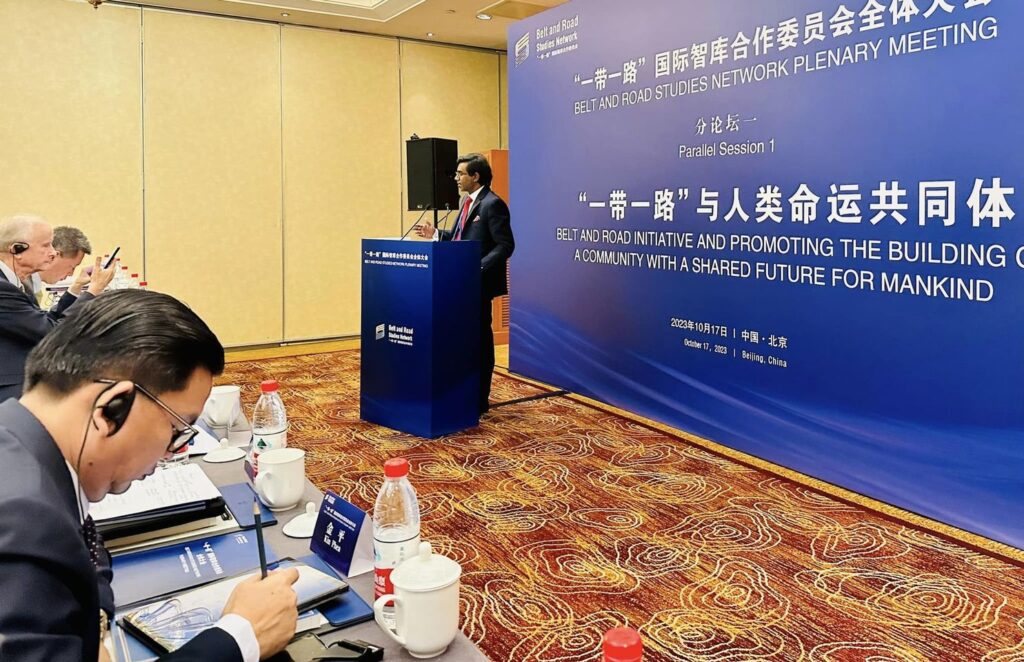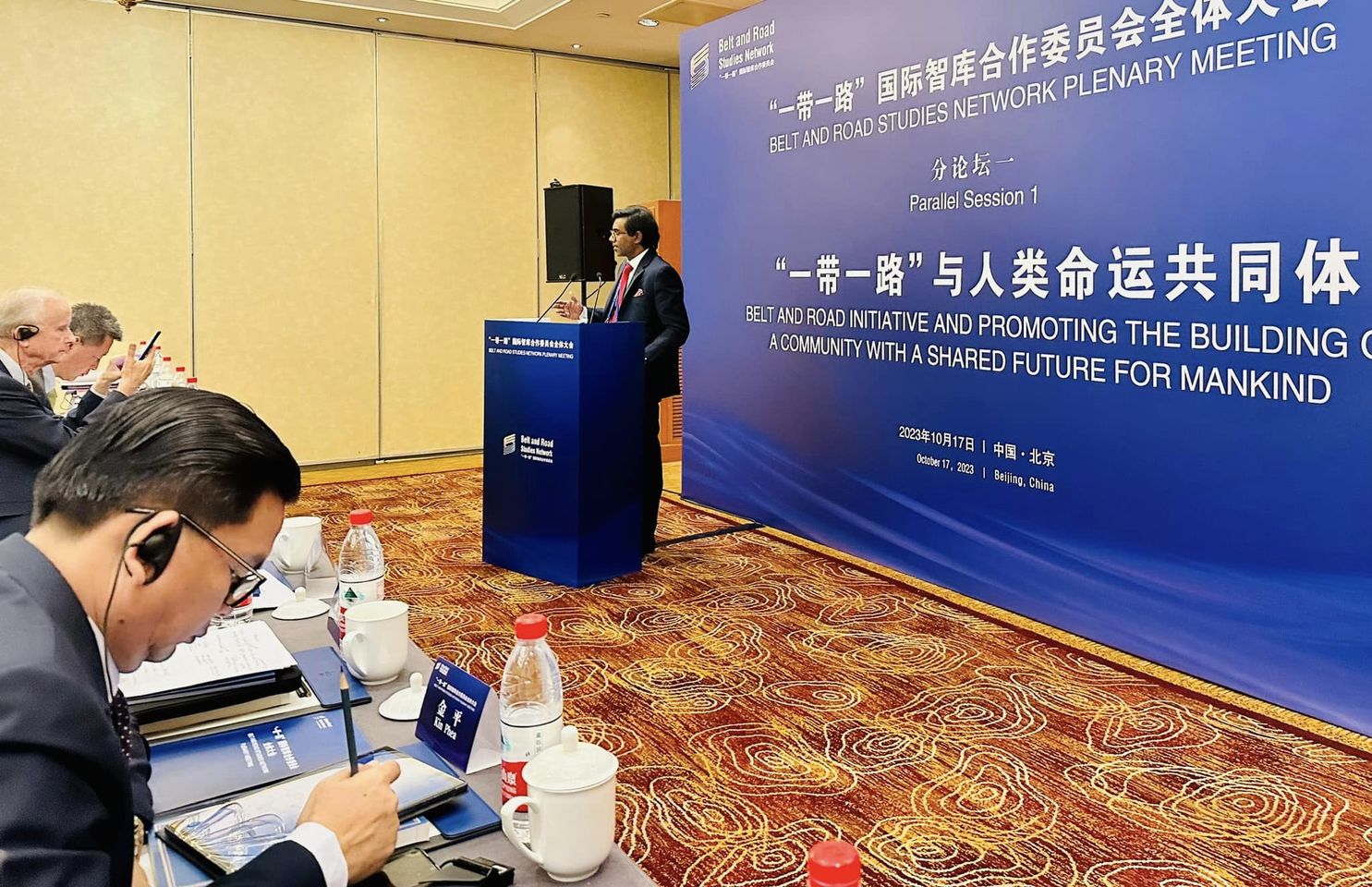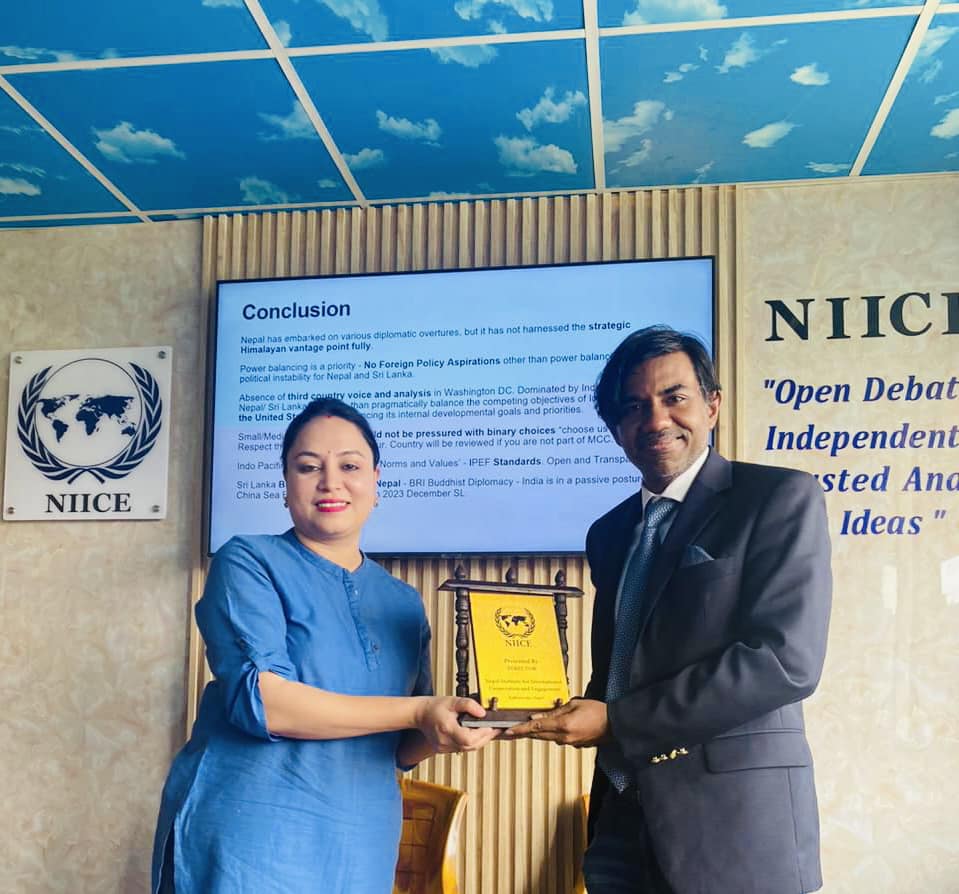
At the 3rd Belt and Road Forum in Beijing, SAFN Executive Director Asanga Abeyagoonasekera presented a research paper on ‘Building a Shared Future from BRI: Revisiting the Asian Regional Order with Sustainability & Synergy’. Mr Abeyagoonasekera said “Spirit of Bandung could be revisited with ‘Shared Future’ and ‘Vasudhaiva kutumbakam’ concepts to draw an Asian regional order. Therefore, a shared future will have a special meaning and resonance in Asia, especially from the global south”. The research paper was published by Xinhua Institute Journal. (17 Oct 2023, Beijing)
Following is the Abstract of the paper published.
Building a ‘Shared Future’ from the Belt and Road Initiative (BRI): Revisiting the Asian Regional Order with Sustainability and Synergy
By Asanga Abeyagoonasekera
Keywords: BRI, Sri Lanka, SDGs, BRI Digital Toolkit, Synergy, Shared Future
Abstract
China’s commitment to building a Shared Future is a principal foreign policy of President Xi, which reflects on the flagship Belt and Road Initiative (BRI). The Shared Future concept derives from ancient Confucian and Buddhist philosophical texts where family is prioritised over individual prosperity as viewed from Western thinking. According to Huiyong Wu, ‘The Chinese concept of State, She Ji (社稷), is thus integrated into the family and development of Confucian political views do not focus on individual private property. The family is more important than the individual, and inter-subjectivity is more important than the individual subject.’ (Wu, 2018) Not limited to China, the same “family” oriented philosophy regarded as an ideal and highly functional unit with equal rights among all individuals is seen in India. Prime Minister Modi of India and many other leaders before him have often evoked the phrase “Vasudhaiva kutumbakam” (the world is one family). Vasudhaiva kutumbakam was taken from the Maha Upanishad to elucidate the country’s global outlook, a mantra of India’s diplomatic lexicon (Sidhu, 2017). Both the Chinese version of “Shared Future” and the Indian version of “Vasudhaiva kutumbakam” pivots to Asian philosophical thinking, detaching from Western thought of individualism and hegemonic world order to promote a shared responsibility among the global “family” members.
While the geopolitical tension between China and India is seen over territorial disputes to maritime security concerns in the Indian Ocean, there is a glue that could attach the two nations closer from the two philosophical world views, the “Shared Future” and “Vasudhaiva kutumbakam”. While China will rise in Asia, India is an integral player in the Asia theatre with the world’s largest population. There should be Synergetic thinking and an approach other than zero-sum power games, which have delayed the collective prosperity of many nations (Abeyagoonasekera et al., 2023). China could use its Shared Future concept more effectively to win over many nations and expand its trade and BRI footprint following some principal guidelines of transparency, improvement in BRI processes, and commitment to the green environment concept, which are areas discussed in this paper. The paper strongly recommends the ‘BRI toolkit’ developed by Asia Society (ASPI Navigating the Belt and Road Initiative Toolkit, 2023), which this author has contributed to this regard, as an essential toolkit to integrate into China’s BRI process.
Full Paper: Xinhua Institute Publication: The Belt and Road Development Studies — A Synergy Approach to Global Development(2023)



